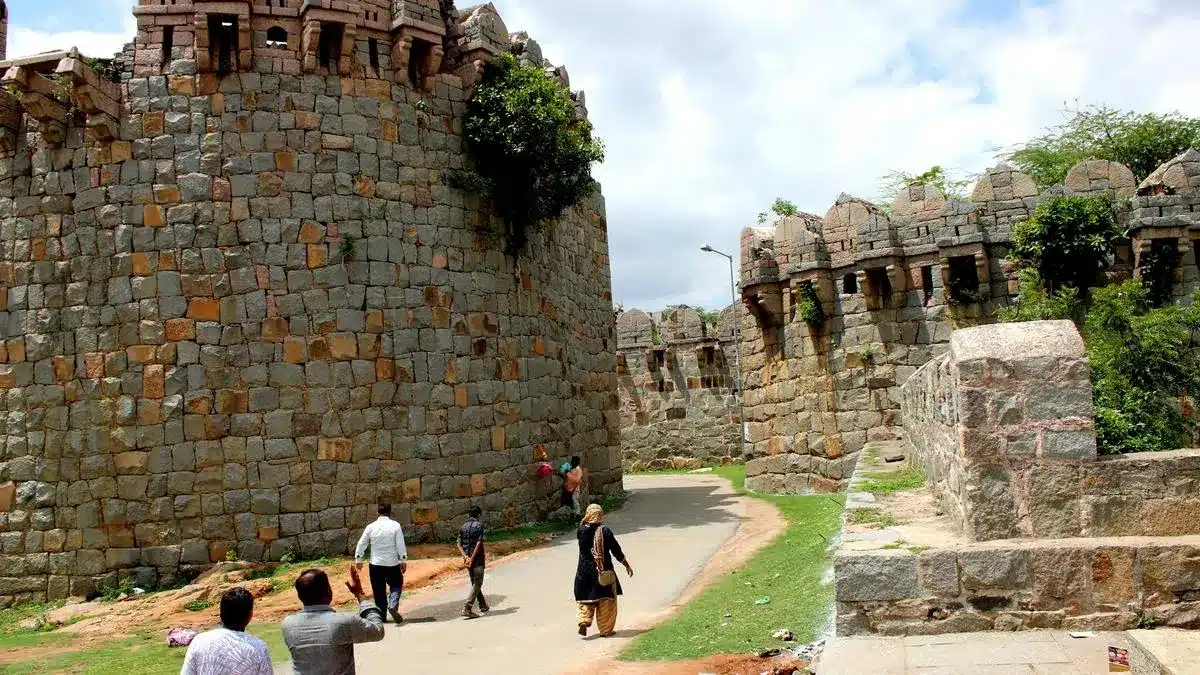About Mudgal Fort
- It is located in the state of Karnataka.
- The fort has a 1000-year history having connections to various dynasties, including the Chalukyas, Rashtrakutas Deccan Sultanate and Vijayanagara Empire.
- The fort gained prominence during the Bahmani Sultans who ruled large areas of the Deccan Plateau from Gulbarga (now Kalaburagi).
- It later went to the hands of the Vijayanagara Empire. After the Sultanate broke into five States (Nizam Shahi of Ahmednagar, Qutb Shahi of Golconda (Hyderabad), Barid Shahi of Bidar, Imad Shahi of Berar and Adil Shahi of Bijapur), the fort was a major cause of clashes between the Vijayanagara Empire and Adil Shahi Sultanate.
- Strategic location
- Standing on the border of the Adil Shahi and Vijayanagara empires, the Mudgal Fort witnessed as many as 11 battles between the 14th and 16th Centuries.
- The Bijapur and Vijayanagara viewed it as a symbol of power and pride because of its strategic location to control the large Raichur Doab, the land between Tungabhadra on the south and Krishna on the north.
- Raichur Doab between Krishna and Tungabhadra rivers is fertile land for agriculture. It has also had rich mineral resources including gold.
- Inscriptions
- Historians and researchers have so far studied as many as 99 inscriptions etched on the fort walls and monuments in Kannada, Sanskrit, Telugu, Persian, Arabic and Gujarati languages.
- Important among them are those that describe the bravery of Malik Murad Khan, the military general of Ibrahim Adil Shah II of Bijapur. He was the man who fought successful battles against the Vijayanagara Empire between 1590 and 1610.
- Architectural style
- The mixed architectural styles of the monuments and traditions followed by the people living inside.
- Inside the fort there is Ranganathaswamy Temple and Hussain Alam Dargah stand side-by-side sharing a common wall and the compound.
- The fort has several gates, each with intricate carvings and strategic placements for defence.
- The main entrance on the north side of the fort, which is called Fateh Darwaza.
Q1) What are inscriptions in history?
Inscriptions are the writings on stone, metal or some materials as an important historical source. These are valuable historical evidence of the existence and activities of early kings and empires and are the information written on the stones, pillars and other metals.
Source: The Hindu
Last updated on January, 2026
→ Check out the latest UPSC Syllabus 2026 here.
→ Join Vajiram & Ravi’s Interview Guidance Programme for expert help to crack your final UPSC stage.
→ UPSC Mains Result 2025 is now out.
→ UPSC Notification 2026 is scheduled to be released on January 14, 2026.
→ UPSC Calendar 2026 is released on 15th May, 2025.
→ UPSC Prelims 2026 will be conducted on 24th May, 2026 & UPSC Mains 2026 will be conducted on 21st August 2026.
→ The UPSC Selection Process is of 3 stages-Prelims, Mains and Interview.
→ UPSC Result 2024 is released with latest UPSC Marksheet 2024. Check Now!
→ UPSC Toppers List 2024 is released now. Shakti Dubey is UPSC AIR 1 2024 Topper.
→ Also check Best IAS Coaching in Delhi

















